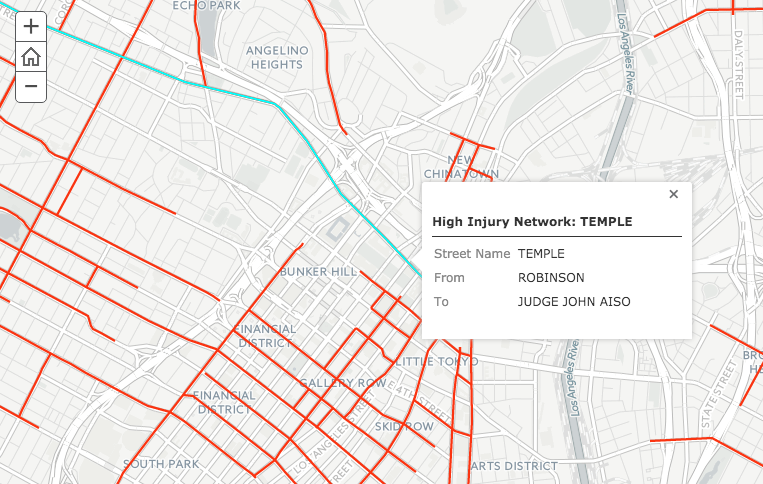Career Profile: Civic Technologist
The public sector is undergoing disruption on a number of fronts, including technological. However it evolves in coming years, the process of civic engagement—getting people to engage in issues of public concern—remains one of its fastest-growing and critical segments. Civic participation depends more and more on “civic technologists” and information architects who can use technology to improve society around them. Michael Manalo is just such an information architect, working on contract for the City of Los Angeles’ Department of Transportation. Some examples of his recent projects in Los Angeles include the People Street program, which promotes the creation of small parks and bike corrals in underused spaces; Vision Zero, a website designed to eliminate traffic fatalities and create safer streets (see the image above); and the Lab at DCA, a staff incubator that’s hosted by the city’s Department of Cultural Affairs to cultivate agency-wide digital literacy and inspire innovative practices. Manalo had previously worked as an architect, designing medical centers and schools. But a flat economy, combined with the realization that what he’d learned in school hadn’t manifested itself in a satisfying way in his career, led him to reconsider his path. Everything he liked about architecture, including urban planning and mobile technology, could transfer to a concept he really cared about: how technology could change the daily culture in urban environments. He went back to school for an interdisciplinary MFA in Media Design Practice; one of his areas of study was how people involved in social movements could use mobile technology and social media to develop and transform public spaces. While the technology involved in civic engagement projects may vary by city, project type and developer preference, Manalo relies most on Visual Studio Basic, WordPress, and BitBucket. For data visualization and mapping, he uses ArcGIS Online, JavaScript, Autodesk, ArcMap for desktop and Adobe Creative Suite. He’s still working on Vision Zero Los Angeles, collaborating with the data team to show how zero traffic fatalities can be reached. “They’ll illustrate the data of understanding collisions,” he said. “A lot of the GIS application that I've worked on came from my experience with People Street and the Lab at DCA, where I was designing information products with Web GIS. I can't say my knowledge is linear or that it's ad-hoc life experience. It's sort of being at the right place at the right time.” He also attends meetings with stakeholders for the city’s web-based projects, including transportation innovators and cultural affairs representatives, city historians, ethnographers, data experts and more. That means he needs to use project-management tools on a regular basis, including Draw.io, Evernote and OneNote, which provide flexibility in note-taking, sketching, and tracking events. Soft skills are essential to the position. He carefully listens to what’s being said at meetings and can rapidly navigate and scrutinize countless emails, then extrapolate the key meanings and functions agreed upon by final decision-makers so that they can be translated into the actual projects. Manalo stressed that it’s crucial not to get lost in meaning and function. You can code for hours and forget what the overall stories and goals are. “Storytelling is really important. You have to be able to focus on the idea that you're communicating,” he said. “It resonates across forms. The constant touchpoint has to be how useful it is, or how easy it is for someone to use and get information. Never forget who your core group of users are and always consider your potential users as well. You want audience growth in civic projects.”


